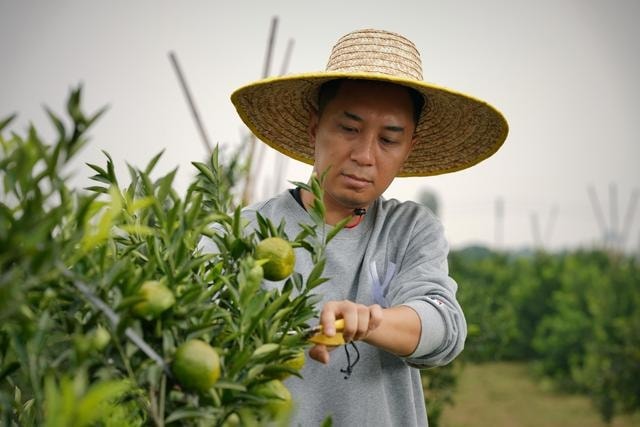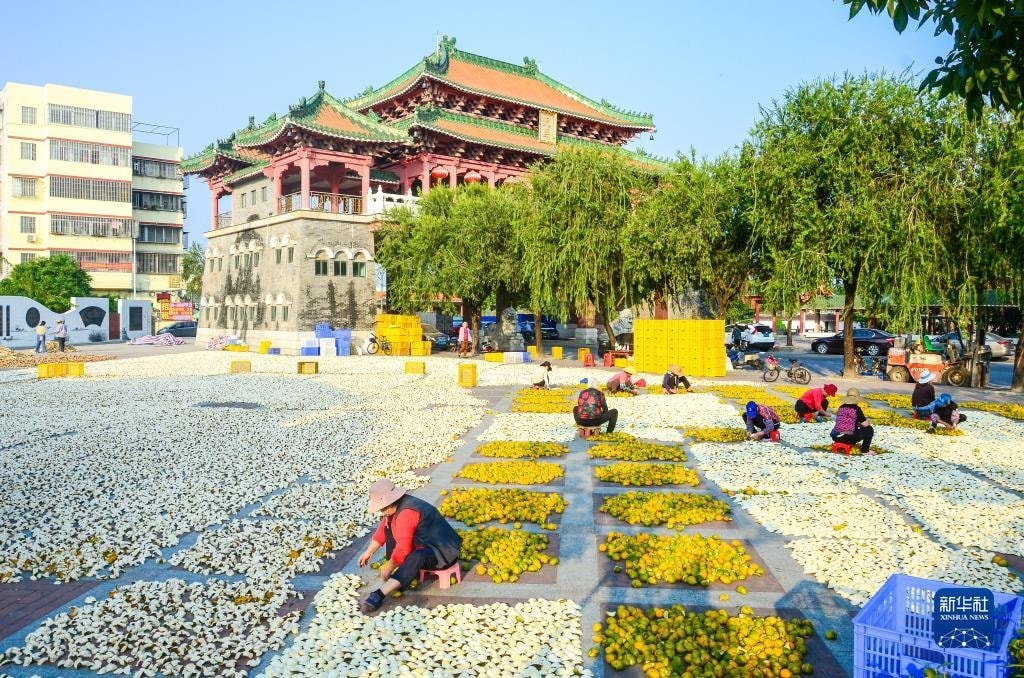Although tangerines can be grown in other areas, only the tangerine peel harvested from Xinhui (China) is as expensive as gold.

On the surface, Xinhui in Jiangmen, Guangdong province, is just a typical sleepy area of a small town in China.
Yet every year, during the fall and winter months, the streets here are filled with a particular scent that reminds us of this place’s long history and bright future: dried tangerine peel, or tangerine peel. For the locals, it’s the smell of gold.
In fact, the Cantonese word for “tangerine” sounds exactly like the word for gold, “gam.” And like the precious metal, some of those tangerine peels can be worth a fortune.
The success of Tan Hoi town is largely due to its tangerine peel products. Although tangerines can be grown in other areas, only the tangerine peel harvested from Tan Hoi is considered as expensive as gold.
The health benefits of old tangerine peel, an herb in Chinese medicine, have been recorded since the Southern Song Dynasty (1127 - 1279).
Tan Hoi is located at the confluence of the Xijiang River and the Tanjiang River, right in the center of the Pearl River Delta (in Guangdong province).
The soil and water composition here has created ideal conditions for growing tangerines. Therefore, it is believed that the tangerine peel here is more valuable and contains more micronutrients than other varieties.
Tangerine peel can only be called “tran bi” (aged tangerine peel, scientific name Citri Reticulatae Pericarpium) if it has been exposed to the sun every fall and winter, continuously for at least three years. During the rest of the year, the tangerine peel is carefully stored.
There are four main types of tangerine peel: green tangerine peel (harvested when the fruit is not yet ripe); light red tangerine peel (harvested in November); dark red tangerine peel (fully ripened in December); dark red tangerine peel after winter (harvested after winter when the tangerine has more sugar).
Chenpi was used in dishes served to the emperors and empresses living in the Forbidden City in Beijing. Today, this ingredient is mainly found in traditional Chinese medicine prescriptions and daily recipes, especially in southern China.
Each different type and age of tangerine peel has its own medicinal uses, but in traditional Chinese medicine, it is believed that tangerine peel can strengthen the spleen, aid digestion, and improve the respiratory system.
Modern research shows that tangerine peel contains antioxidants and flavonoids (an anti-cancer ingredient) and has the potential to stabilize blood pressure as well as prevent obesity. And like fine wine, tangerine peel becomes more valuable as it ages.

In the past, the tangerine peel trade was considered a backward industry. But some people have realized the potential of this raw material. Over the past two decades, the tangerine peel industry has developed strongly.
In 2023, a kilogram of dried tangerine peel from 1968 was auctioned in Hong Kong for $9,646. That same year, Xinhui became the first and only Jiangmen district to generate $13.8 billion in revenue, accounting for about a quarter of the city’s GDP. The tangerine peel industry is expected to be worth $3.2 billion by 2024. Currently, 500 grams of 50-year-old tangerine peel costs about $9,650.
The city has thrived on tangerine peels. At a tangerine farm in Songshuizhen Village, a county in Xinhui, workers bring hundreds of young tangerines indoors after hours of drying in the gentle autumn sun. Others sort the peels into different grades. These tangerines, which produce valuable dried tangerine peel, are still green.
Nowadays, many young entrepreneurs are exploring innovative business opportunities to boost production and diversify product development from tangerine peel.
Tan Hoi may not be a widely developed tourist destination, but visitors can enjoy attractions such as the historic Tra Khanh village, known as the “hometown of tangerine peel.” From autumn onwards, thousands of white and yellow tangerine peels line the square.
Not far from Tra Khanh village is Tran Bi village, a relatively new cultural and entertainment destination that will satisfy all your tangerine needs. Cafes sell tangerine ice cream and coffee covered in sweet and salty tangerine peel powder. There are also shops selling a variety of tangerine peels and related snacks. Restaurants serve Tan Hoi’s famous roasted duck, which is coated in a secret tangerine peel sauce while being grilled over an open fire.